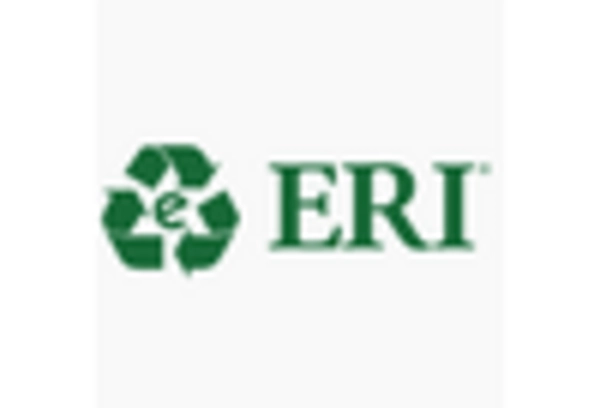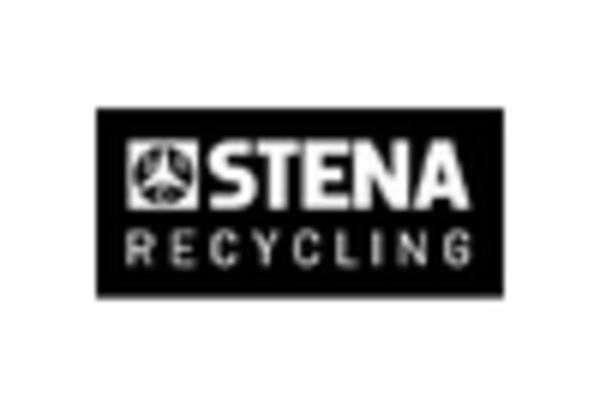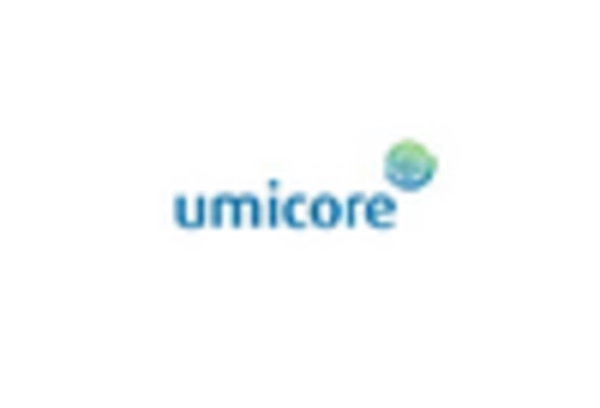Increasing Regulatory Compliance
The electronic waste-recycling market in Canada is experiencing a surge in regulatory compliance requirements. Government initiatives aimed at reducing environmental impact have led to stricter regulations governing the disposal and recycling of electronic waste. For instance, the Canadian Environmental Protection Act mandates proper recycling practices, which has resulted in a growing demand for certified recycling facilities. As of 2025, approximately 60% of electronic waste generated in Canada is now being processed through compliant channels, reflecting a significant increase from previous years. This regulatory landscape not only encourages responsible recycling but also fosters innovation within the industry, as companies strive to meet these evolving standards. Consequently, the electronic waste-recycling market is likely to expand as businesses adapt to these regulations, ensuring that they remain competitive and environmentally responsible.
Rising Consumer Electronics Sales
The electronic waste-recycling market is significantly influenced by the rising sales of consumer electronics in Canada. With the proliferation of smartphones, laptops, and other electronic devices, the volume of electronic waste generated is expected to increase substantially. In 2025, it is estimated that Canadians will dispose of over 1 million tonnes of electronic waste, creating a pressing need for effective recycling solutions. This trend presents a dual opportunity: while the influx of waste poses challenges, it also drives demand for recycling services. Companies in the electronic waste-recycling market are likely to benefit from this growth, as they develop innovative methods to process and recycle these materials. Furthermore, the increasing awareness of environmental issues among consumers may lead to higher participation rates in recycling programs, further bolstering the market's expansion.
Corporate Sustainability Initiatives
Corporate sustainability initiatives are increasingly influencing the electronic waste-recycling market in Canada. Many companies are adopting environmentally responsible practices as part of their corporate social responsibility (CSR) strategies. This shift is driven by consumer demand for sustainable products and practices, as well as the need to comply with regulatory requirements. In 2025, it is estimated that over 40% of Canadian businesses have implemented e-waste recycling programs, reflecting a growing commitment to sustainability. These initiatives not only enhance corporate image but also contribute to the overall growth of the electronic waste-recycling market. By partnering with certified recycling facilities, companies can ensure that their electronic waste is processed responsibly, thereby reducing their environmental footprint and promoting a circular economy.
Government Incentives for Recycling Programs
Government incentives are playing a crucial role in promoting the electronic waste-recycling market. Various provincial and federal programs are designed to encourage both consumers and businesses to participate in recycling initiatives. For example, financial incentives such as tax credits and grants for recycling facilities are being offered to stimulate investment in the sector. As of 2025, it is reported that these incentives have led to a 25% increase in the number of recycling programs across Canada. This trend not only supports the growth of the electronic waste-recycling market but also fosters a culture of recycling among consumers. By making recycling more accessible and financially attractive, government initiatives are likely to drive higher participation rates, ultimately contributing to a more sustainable approach to electronic waste management.
Technological Advancements in Recycling Processes
Technological advancements are playing a pivotal role in shaping the electronic waste-recycling market. Innovations in recycling technologies, such as automated sorting systems and advanced material recovery techniques, are enhancing the efficiency and effectiveness of recycling operations. For instance, the introduction of AI-driven sorting technologies has improved the recovery rates of valuable materials from electronic waste, potentially increasing the profitability of recycling facilities. As of 2025, it is projected that these technologies could boost recovery rates by up to 30%, thereby making recycling more economically viable. This trend not only supports the growth of the electronic waste-recycling market but also encourages investment in research and development, as companies seek to stay ahead in a competitive landscape. The integration of such technologies is likely to redefine industry standards and practices.
















Leave a Comment